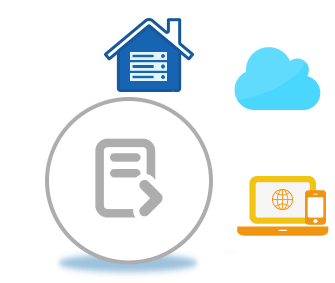Convert POTX to JSON Files Online using App
- Upload POTX files to convert
- Wait for few seconds or more depending on POTX size
- Keep an eye on uploading status bar
- Click the “Convert” button
- POTX will be converted into JSON document
- Download the converted JSON file
Convert POTX to JSON via .NET Automation API
- Open POTX file using Presentation class
- Convert POTX to HTML by using Save method
- Load HTML document by using Workbook class
- Save the document to JSON format using Save method
Convert POTX to JSON via C# .NET
Few more cases for saving POTX to JSON with other features like Convert Protected POTX to JSON Format via C#, Convert POTX to JSON in Range via C#.
Develop POTX File Conversion Application using .NET
Need to develop .NET based software application to easily save and export POTX files to JSON document ? With
Aspose.Total for .NET
, any .NET developer can integrate the above API code to program the conversion application across variety of formats including Microsoft Word, Excel, Powerpoint, PDF, Email files, Images and other formats. Powerful .NET library for document conversion, supports many popular formats including POTX format. Exporting documents to other formats, programmers can use Aspose.Total for .NET child APIs inlcluding
Aspose.Words for .NET
,
Aspose.Cells for .NET
,
Aspose.Slides for .NET
,
Aspose.PDF for .NET
,
Aspose.Imaging for .NET
and more.
POTX Conversion Library for .NET
There are three alternative options to install Aspose.Total for .NET onto your system. Please choose one that resembles your needs and follow the step-by-step instructions:
- Install a NuGet Package . See Documentation
- Install the library using Package Manager Console as of its child API selection within Visual Studio IDE like Aspose.Wrods , Aspose.Cells , Aspose.PDF etc
- Install the library manually using Windows Installer
Saving POTX to JSON App Requirements
Our product is fully cross-platform and supports all major .NET implementations following ‘.NET Standard 2.0’ specification:
- Microsoft .NET Framework, starting from the earliest 2.0 version, and ending with the latest ‘.NET Framework 4.8’
- .NET Core, starting from the earliest 2.0, and ending with the latest ‘.NET 6’
- Mono >= 2.6.7
As .NET code doesn’t rely on the underlying hardware or operating system, but only on a Virtual Machine, so you are free to develop any kind of software for Windows, macOS, Android, iOS and Linux. Just make sure you have installed the corresponding version of .NET Framework, .NET Core, Windows Azure, Mono or Xamarin.
We recommend using Microsoft Visual Studio, Xamarin, and MonoDevelop IDE to create C#, F#, VB.NET applications.
FAQs
- Can I use above .NET code in my application?Yes, you are welcome to download this code. One can easily develop a professional solution to export and save POTX to JSON file using .NET. Use Aspose POTX to JSON conversion API to develop high-level, platform independent software in .NET.
- Is this document exporting App work only on Windows?You have the flexibility to initiate exporting document from POTX to JSON from any device, irrespective of the operating system it runs on, whether it be Windows, Linux, Mac OS, or Android. All that's required is a contemporary web browser and an active internet connection.
- Is it safe to use the online app to convert multiple POTX documents?Of course! The output files generated through our service will be securely and automatically removed from our servers within a 24-hour timeframe. As a result, the download links associated with these files will cease to be functional after this period.
- What browser should to use App?You can use any modern web browser like Google Chrome, Firefox, Opera, or Safari for online POTX document conversion.
- How can I export multiple POTX files?Start by uploading one or more files you want to convert. You can either drag and drop your POTX files or simply click inside the white area. Afterward, click the 'Convert' button, and our online conversion app will quickly process the uploaded files.
- How long does it take to convert the POTX files?This conversion application operates quickly, It may take a few seconds or more depending on the document size to upload and save them to required format.



